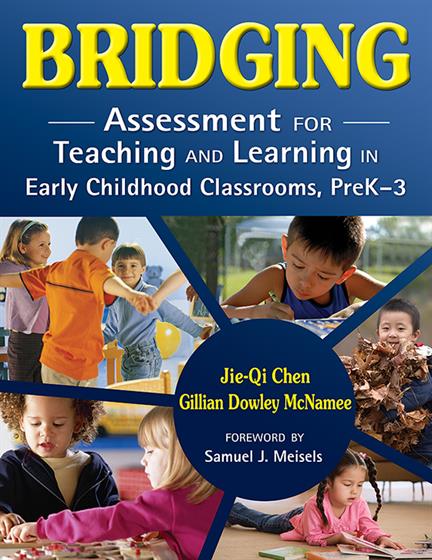List of Tables and Figures
Foreword by Samuel J. Meisels
Preface
Acknowledgments
About the Authors
Section I. A Guide for Teachers
1. Introduction to the Process of Bridging
Assessment and Teaching
Bridging in Classrooms
Overview of Bridging
Distinctive Features of Bridging
Bridiging for Preservice and Inservice Teachers
Overview of the Bridging Handbook
2. Assessing the Content of Children's Learning
Diversity and Individual Differences
Diverse Curricular Areas
Promoting Underlying Concept Development
Key Concepts and Skills
Performance Rubrics
Learning Profiles
Actual and Potential Development
3. Assessing the Process of Children's Learning
Approaches to Learning
Defining Approaches to Learning
Rubrics to Measure Working Approaches
Sources of Variability in Working Approaches
Working Approaches in the Bridging Process
4. Activity as the Unit of Analysis in Bridging Assessment
Unit of Analysis in Child Assessment
Activity as the Unit of Analysis in Bridging Assessment
Conceptual Framework of Bridging
Bridging Activities as Basic Activities
Bridging Activities and Play
5. Task Parameters in Bridging Assessment
Task Parameters in Bridging Assessment
Task Goals
Key Concepts and Skills
Materials
Social Arrangements
Structure of Tasks
Summary
6. Teacher Roles in Bridging Assessment
Overview of Teacher Roles
Decision Maker
Participant
Observer
Interpreter
Translator
Integrating Roles and Teacher Development
Bridges to Effective Teaching
Section II. Implementation of Assessment Activities
7. Implementing Bridging
Implementing Bridging in the Classroom Context
Becoming Familiar With Activity Protocols
Planning the Assessment
Conducting Bridging Activities
Interpreting the Assessment Results
Linking Assessment to Teaching
Activities: Language Arts and Literacy
What We Know
What Bridging Provides
Why These Three Activities
Standards and Language Arts and Literacy Bridging Activities
Reading a Book-Child's Choice and Teacher's Choice
Dictating a Story
Acting Out a Story
Activities: Visual Arts
What We Know
What Bridging Provides
Why These Three Activities
Standards and Visual Arts Bridging Activities
Experimenting With Crayon Techniques
Drawing a Self-Portrait
Making Pattern Block Pictures
Activities: Mathematics
What We Know
What Bridging Provides
Why These Three Activities
Standards and Mathematics Bridging Activities
Creating Pattern Block Pinwheels
Solving Pattern Block Puzzles
Exploring Number Concepts (Counting, Subtracting, Estimating, and "Fair Share"-Simple Division)
Activities: Sciences
What We Know
What Bridging Provides
Why These Three Activities
Standards and Science Bridging Activities
Exploring Shadows and Light
Assembling a Nature Display
Building a Model Car
Activities: Performing Arts
What We Know
What Bridging Provides
Why These Three Activities
Standards and Performing Arts Bridging Activities
Moving to Music
Playing an Instrument
Singing a Song
References and Recommended Readings
Facilitator's Guide to Bridging and Teacher Development
Inservice Professional Development
Professional Studies for Preservice Teacher Candidates
Building a Community of Learners
Index




